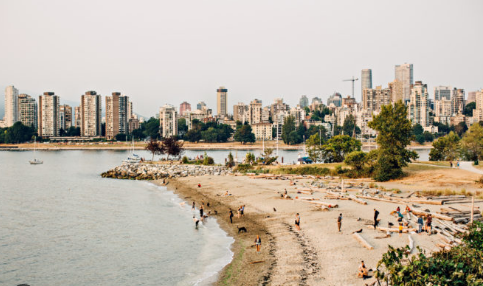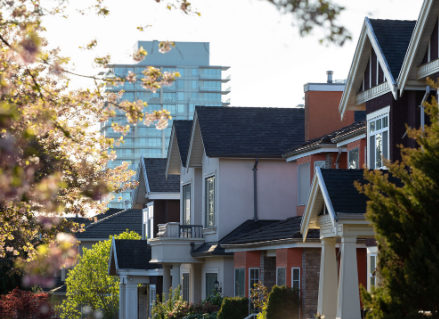Vancouver, British Columbia, consistently ranks as one of the world’s most livable cities, known for its stunning natural beauty, diverse culture, and thriving arts scene. However, like any urban area, it has its fair share of both desirable and less appealing neighborhoods. If you’re considering a move to Vancouver, it’s essential to know which areas will best suit your needs, as well as the places you may want to avoid. In this article, we’ll explore the best and worst places to live in Vancouver to help you make an informed decision.
Best Places to Live in Vancouver
a) Kitsilano
Kitsilano, affectionately known as “Kits,” is a vibrant neighborhood located on Vancouver’s west side. Known for its laid-back atmosphere, Kitsilano offers beautiful beaches, trendy boutiques, and a plethora of dining options. The area is perfect for those who enjoy an active lifestyle, with easy access to outdoor recreational activities like cycling and paddleboarding. The neighborhood also boasts excellent schools, making it a desirable place for families.
b) West End
The West End is one of Vancouver’s most diverse and lively neighborhoods, nestled between downtown and Stanley Park. This dense urban area offers a mix of high-rise apartments, historic homes, and lush green spaces. The West End is an ideal place to live for those seeking a cosmopolitan lifestyle with excellent transit access and a bustling nightlife scene. The area also caters to a diverse range of demographics, including young professionals, families, and retirees.
c) Yaletown
Once an industrial district, Yaletown has transformed into one of Vancouver’s trendiest neighborhoods. Situated along False Creek, Yaletown offers a mix of high-end residential condos, upscale dining, and boutique shopping. This fashionable district caters to young professionals and empty-nesters seeking a luxurious, urban lifestyle. Yaletown is also home to several parks and the seawall, providing ample opportunities for outdoor recreation.
d) Mount Pleasant
Mount Pleasant, located in the heart of Vancouver, is a thriving neighborhood that offers a mix of residential and commercial spaces. The area is characterized by its vibrant street art, eclectic shops, and diverse dining options. Mount Pleasant is a popular choice for young professionals and artists seeking an urban vibe with a touch of bohemian flair. Additionally, the neighborhood provides easy access to public transit and is within walking distance of several parks.
e) South Granville
South Granville is an upscale neighborhood that boasts a range of stunning heritage homes and contemporary condos. The area is known for its thriving arts scene, with numerous galleries, theaters, and art-house cinemas. South Granville’s central location makes it an ideal place to live for professionals and families alike. The neighborhood offers a variety of top-rated schools, as well as convenient access to shopping and dining options.
Worst Places to Live in Vancouver
a) Downtown Eastside
Downtown Eastside, also referred to as DTES, is one of Vancouver’s most notorious neighborhoods. The area has long been plagued by issues such as drug addiction, homelessness, and poverty. While the city has made strides in addressing these challenges through social initiatives and redevelopment, many issues persist. The high crime rate and overall challenging living conditions make DTES one of the least desirable places to live in Vancouver.
b) Marpole
Marpole, situated in south Vancouver, has experienced significant changes in recent years due to rapid urbanization and redevelopment. While the neighborhood offers some affordable housing options, it struggles with issues such as traffic congestion, limited public transportation, and an overall lack of amenities. The industrial character of Marpole also detracts from its appeal as a residential area.
c) Renfrew-Collingwood
Renfrew-Collingwood, located in East Vancouver, is a diverse and primarily residential neighborhood. Although the area boasts a strong sense of community, it faces challenges such as aging infrastructure, traffic congestion, and limited green spaces. Additionally, Renfrew-Collingwood experiences higher crime rates compared to some other Vancouver neighborhoods, which may deter potential residents.
d) Hastings-Sunrise
Hastings-Sunrise, also known as the East Village, is a historic neighborhood in the northeastern corner of Vancouver. While the area is home to a tight-knit community and offers some affordable housing options, it also grapples with various issues. Hastings-Sunrise suffers from a higher crime rate than many other Vancouver neighborhoods, along with problems like traffic congestion and limited access to public transit. Despite efforts to revitalize the area, these challenges persist and may dissuade some from calling Hastings-Sunrise home.
e) Strathcona
Strathcona is Vancouver’s oldest neighborhood, rich in history and architectural charm. However, the area has struggled with socio-economic issues, including poverty, drug addiction, and crime. While the city has invested in revitalization projects and social initiatives to address these challenges, many concerns remain. The ongoing struggles make Strathcona a less desirable option for those seeking a more stable living environment in Vancouver.
Conclusion
Vancouver is a vibrant and diverse city that offers a wide range of living experiences. From trendy neighborhoods like Yaletown and Kitsilano to more challenging areas like the Downtown Eastside and Strathcona, it’s essential to research and consider your priorities before making a decision on where to live. By examining factors such as crime rates, access to amenities, public transportation, and community engagement, you can find the perfect neighborhood to call home in this beautiful city.

“Proud thinker. Tv fanatic. Communicator. Evil student. Food junkie. Passionate coffee geek. Award-winning alcohol advocate.”






